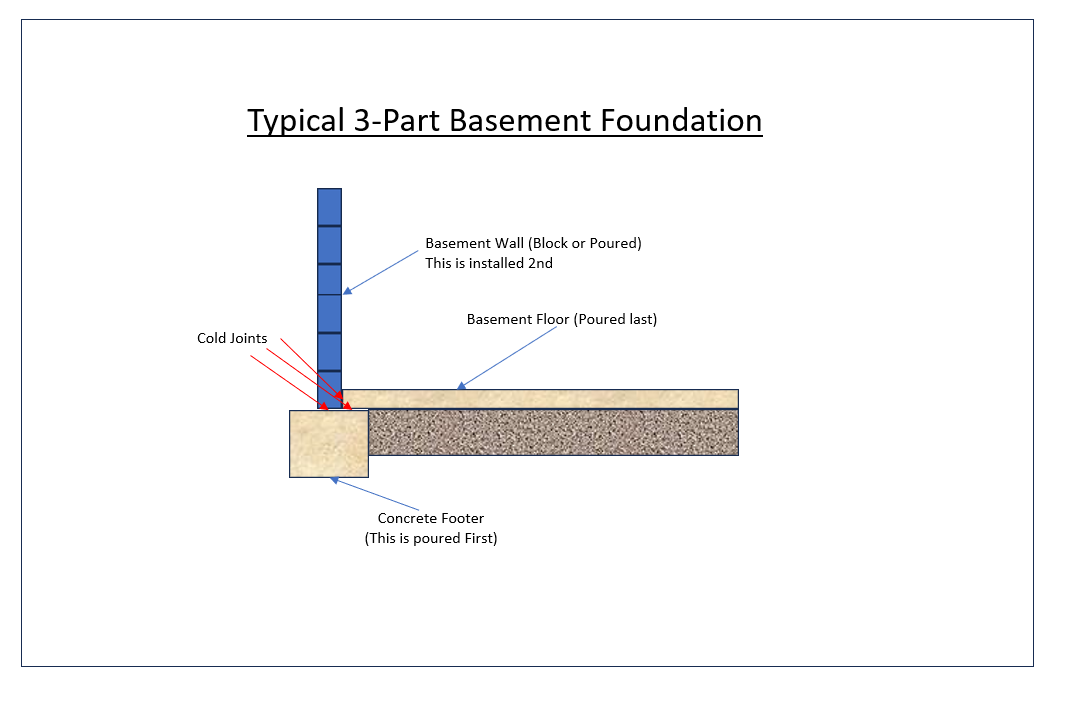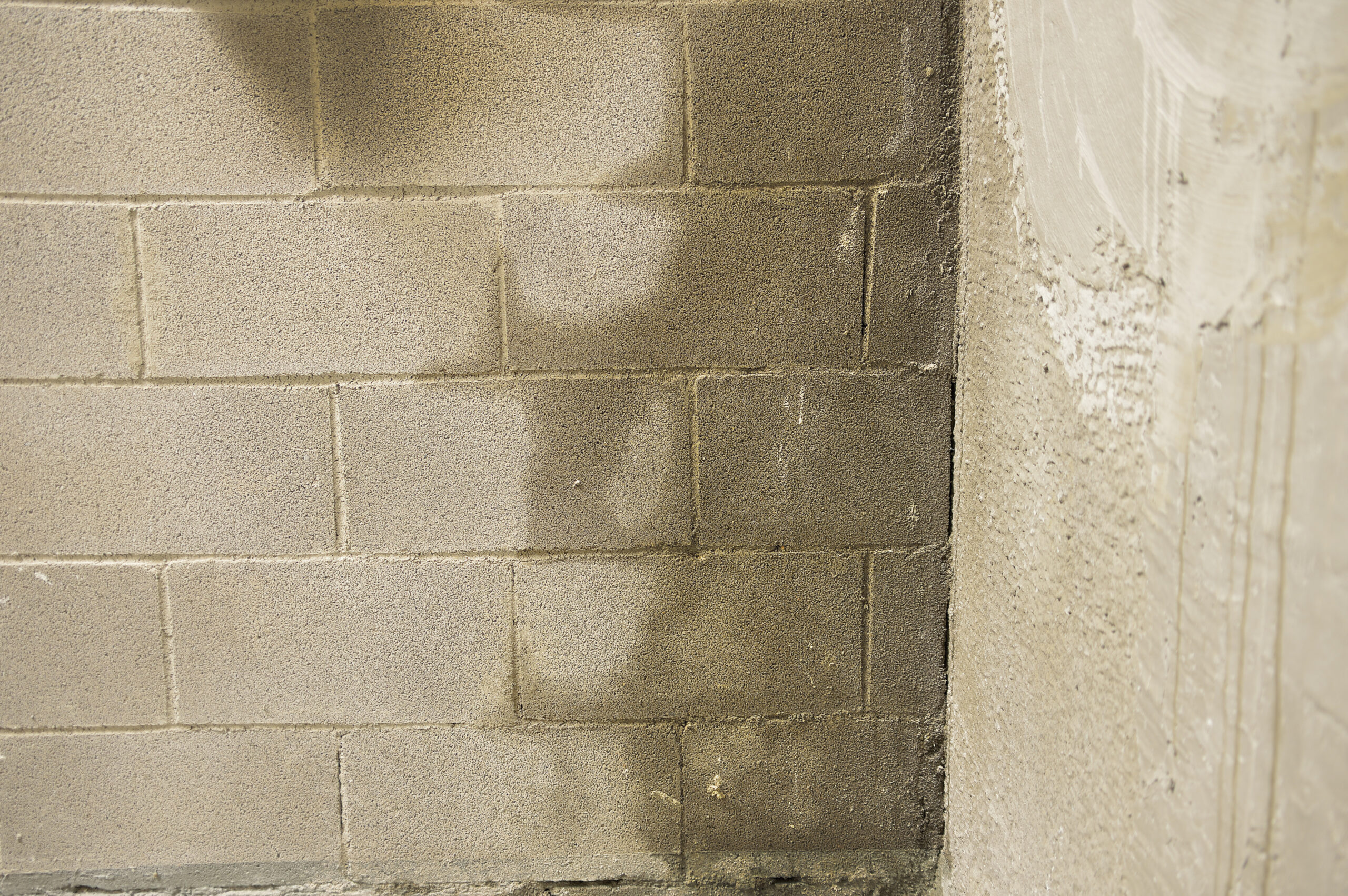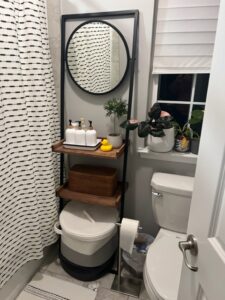To properly waterproof your basement, start by identifying the severity of dampness issues. For minor problems, DIY solutions like sealing cracks and using waterproofing paint can be effective. For severe issues, professional waterproofing services may be necessary. Implement exterior measures like maintaining gutters and proper soil grading, and consider installing sump pumps or exterior French drains in high-risk areas. Regular maintenance and monitoring are crucial for long-term effectiveness.
Understanding Basement Waterproofing is one of the most important aspects of owning a home. Whether you are in the market for a new home, or own an existing home, having a basic knowledge of how basement water proofing systems are designed to work is extraordinarily important. Knowing how to identify and address a problem in your existing home can also avoid potentially dangerous health issues due to mold growth.
Basements are inherently prone to moisture problems due to their below-ground location. Left unchecked, this moisture can lead to structural damage, mold growth, and a host of other issues. Waterproofing your basement isn’t just a preventative measure; it’s a vital step in maintaining the health and longevity of your home.
While there are many easy to implement DIY solutions which we’ll cover in this article, having the basic knowledge of how these systems are supposed to work will help guide you to know when to call in a professional or if you should tackle the problem yourself.
Basement Dampness Severity
Before we start discussing how to address problems with basement waterproofing, let’s draw a distinction between minor and severe issues. If the issues you are experiencing are minor, there may be a few DIY solutions that will solve the problem. However, if the issues are severe, then a processional basement waterproofing service may be required. So what are “minor” and “severe” issues?
Minor Water Issues in a Basement:
- Occasional Dampness or Humidity: This might be observed during specific seasons or after heavy rainfall. It’s often more of a nuisance than a structural threat.
- Small, Localized Leaks: These are leaks that are confined to a specific area, such as around a window or at a single crack in the foundation.
- Condensation: This appears as wet spots or a damp feeling on walls and floors, often caused by high humidity levels in the basement.
- Mildew Smell: A musty or mildew smell indicates moisture problems but doesn’t necessarily mean severe water infiltration.
Severe Water Issues in a Basement:
- Frequent or Continuous Flooding: Regular water accumulation, especially if it covers a significant portion of the basement floor, is a severe issue.
- Extensive Mold Growth: While a small amount of mold can be a minor issue, extensive or recurring mold growth indicates a persistent moisture problem.
- Structural Damage: Signs of structural damage, such as bowing walls, expanding cracks, or shifting floors, can indicate severe water issues impacting the foundation’s integrity.
- Water Stains High on Walls: Water marks or stains high up on basement walls suggest a high water table or serious external water pressure, which can be a significant concern.
- Efflorescence: White, powdery deposits on walls, known as Efflorescence, occur when water moves through concrete or brick. While not always severe, widespread or recurring efflorescence may indicate serious water infiltration.
- Pooled Water: Visible pools of water, not just dampness, especially in areas away from walls or windows, indicate a significant problem.
Basement Foundations: How They are Constructed
Basement waterproofing issues are typically a consequence of how foundations are normally constructed. Typically, there are 3 major components to a basement foundation as follows:
- Footings: These are typically made of concrete poured into an excavated trench. The footings act as a stable base, distributing the weight of the house evenly and providing support for the foundation walls. They are set deep enough to be below the frost line, which helps prevent the foundation from being affected by freeze-thaw cycles.
- Foundation Walls: Once the footings have cured, foundation walls are constructed on top of them. These walls are usually made from poured concrete or concrete blocks. The walls form the perimeter of the basement and are responsible for holding back the surrounding earth. The construction of these walls must be robust enough to withstand both the external pressure from the soil and any hydrostatic pressure that can build up due to groundwater.
- Basement Slab: After the walls are in place and have cured, the basement slab, which is the floor of the basement, is poured. This concrete slab is laid directly on the prepared subsoil inside the perimeter of the foundation walls. The slab is typically reinforced with steel rebar or mesh to increase its strength and prevent cracking.

Vulnerabilities and Waterproofing Considerations:
- Cold Joints: As each of these components (footings, walls, slab) is poured at different times, cold joints are formed between them. These are the areas where the new concrete meets the already hardened concrete. Cold joints are potential weak points for water seepage because concrete doesn’t bond as effectively to previously cured concrete.
- Wall Cracks: Over time, foundation walls can develop cracks due to settling, shifting soil, or pressure from the surrounding earth. These cracks can become channels for water to enter the basement.
- Floor-Wall Joint: The joint where the basement floor meets the walls is another common area for leaks. This is often due to hydrostatic pressure under the basement floor pushing water up through the joint.
Basement Waterproofing During Construction
When a house is constructed, the type of water control measures depends on the location and its proximity to water tables, and of course, the quality of the builder. Here’s a list of various types of systems typically installed in homes. It’s important to understand basic construction techniques to help tailor your approach to solving basement dampness issues.
- Waterproof Membranes and Coatings:
- Exterior Waterproofing Membranes: These are applied to the exterior walls of the foundation. Made of rubber, polymer, or bituminous materials, these membranes create a physical barrier that prevents water from entering the structure. They are typically applied after the foundation walls have been poured and cured.
- Liquid Waterproof Coatings: These are often used on both the interior and exterior of foundation walls. They are applied like paint and form a waterproof seal once dried. These coatings are particularly effective against minor dampness and water vapor.
- Drainage Systems:
- French Drains or Weeping Tiles: Installed around the perimeter of the foundation, these drains collect water from the soil surrounding the house and redirect it away from the foundation. They usually consist of a perforated pipe placed in a gravel-filled trench, covered with filter fabric to prevent clogging.
- Interior Drainage Systems: In some cases, especially in areas with high water tables, interior drainage systems are installed beneath the basement floor. These systems collect water that enters the basement and channel it to a sump pump, which then expels the water away from the building.
- Waterproofing Additives for Concrete:
- Concrete used for foundations can be mixed with waterproofing additives to enhance its water-resistant properties. These additives can reduce the concrete’s porosity and improve its density, making it less susceptible to water penetration.
- Capillary Breaks:
- These are materials placed under the foundation slab and on top of the footings to prevent water from wicking up through the concrete by capillary action. They are typically made of a layer of gravel or crushed stone.
- Dampproofing:
- While not as comprehensive as waterproofing, dampproofing is a treatment applied to exterior foundation walls to resist soil moisture. It’s usually a spray-on bituminous coating, less effective than true waterproof membranes but commonly used in areas with lower water exposure.
- Foundation Drainage:
- Proper grading and surface drainage are essential to direct water away from the foundation. This includes sloping the ground away from the building and ensuring that downspouts and gutters are correctly installed to channel roof water away from the foundation.
- Basement Sump Pumps:
- In areas prone to basement flooding, sump pumps are installed to remove water that accumulates in a sump pit. They are a critical part of an interior waterproofing system, especially in basements below the water table level. An interior french drain is installed around the basement walls. These are excellent last lines of defense, however, many are installed improperly. Peter O’shea from American Dry Basement Systems does a phenomenal job of describing how these systems should be installed and what to look for in your home to identify potential issues.
Exterior Waterproofing: Your First Defense Line
Effective basement waterproofing starts outside. Gutters and downspouts are necessities in directing rainwater away from your foundation. Keeping these clear and properly maintained is essential. Additionally, the soil around your home should slope away from the foundation, ensuring that water doesn’t pool around your home’s base.
DIY Things You Can Easily Do!
Sealing Cracks and Holes For sealing cracks and holes, products like Quikrete Hydraulic Cement or Sika Concrete Fix can be very effective. These materials expand as they cure, ensuring a tight, waterproof seal in the concrete. This short 4 min video from Winni is a fantastic tutorial on how to use the Sika crack kit to fix cracks in poured basement walls.
Applying Waterproofing Paint or Coatings After sealing, apply a waterproofing paint or sealant to the basement walls. DRYLOK Extreme Masonry Waterproofer is a popular choice, known for its ability to penetrate deep into the concrete and create a durable moisture barrier. Another good option is Behr Premium Basement & Masonry Waterproofer.
Installing a Vapor Barrier For installing a vapor barrier, consider using US Energy Products. This is a tough, durable polyethylene sheet that provides a moisture and vapor barrier. Alternatively, Stego Wrap Vapor Barrier is another high-quality option that effectively blocks moisture transmission.
Improving Basement Ventilation To improve air quality and reduce moisture, a dehumidifier like the hOmeLabs Energy Star Dehumidifier can be very effective. Installing this close to a drain or sump is ideal so you don’t have to continually empty a collection tank.
For enhancing air circulation, consider installing additional vents or using fans like the Vornado 293 Heavy-Duty Shop Air Circulator.
Insulating Pipes For pipe insulation, Frost King Foam Tubular Pipe Insulation is a reliable choice. It’s easy to install and effectively prevents pipe condensation. Another option is Thermacel Polyethylene Pipe Insulation, which offers excellent thermal insulation and moisture resistance.
Addressing Window Wells For window wells, the Shape Products Circular Window Well Cover is a sturdy and clear option that keeps out rain, snow, and debris. For a more customized fit, the Ultra Protect Plastic Window Well Cover can be tailored to your specific window well dimensions.
Regular Monitoring and Maintenance A regular checklist and a keen eye for detail are essential. Keeping a log of inspections and any maintenance work done can help track the health of your basement over time.
Advanced Waterproofing Techniques
In areas with high water tables or heavy rainfall, if your house wasn’t built with one, installing a sump pump can be a lifesaver. All of the proactive measures still may not be enough. These pumps actively remove water that accumulates in your basement, keeping it dry. Exterior French drains are another advanced option, especially effective in directing water away from your foundation.
Maintenance: Ensuring Long-Term Effectiveness
Regular maintenance is key to the long-term success of your waterproofing efforts. This includes routine inspections of gutters, soil grading, and the condition of your basement walls. Addressing minor issues promptly can prevent more significant problems in the future.
When to Call in the Professionals
While many waterproofing methods can be DIY, complex issues may require professional intervention. If you’re uncertain about the extent of your basement’s water problems or the best solution, consulting with a waterproofing expert can ensure the job is done correctly.
Wrapping Up: The Path to a Dry and Secure Basement
Basement waterproofing is an essential aspect of home maintenance. By implementing both interior and exterior strategies, you can protect your basement from water damage, enhance your home’s value, and create a healthier living environment. Remember, the key to a dry basement lies in proactive measures and regular maintenance.
Stay tuned to Trustworthy Home Advice for more insights and practical tips on enhancing your home. Whether it’s waterproofing your basement or tackling other home improvement projects, we’re here to guide you every step of the way.





Installing barriers wherever possible for our basement could be a great way to handle things. That way, we can add wet bars and kitchen fixtures here if we want to without worrying about moisture issues too much. I’ll ask for help from a local basement waterproofing expert in the area so they can give us a hand with this right away.
Thanks for the comment Afton! Agree!